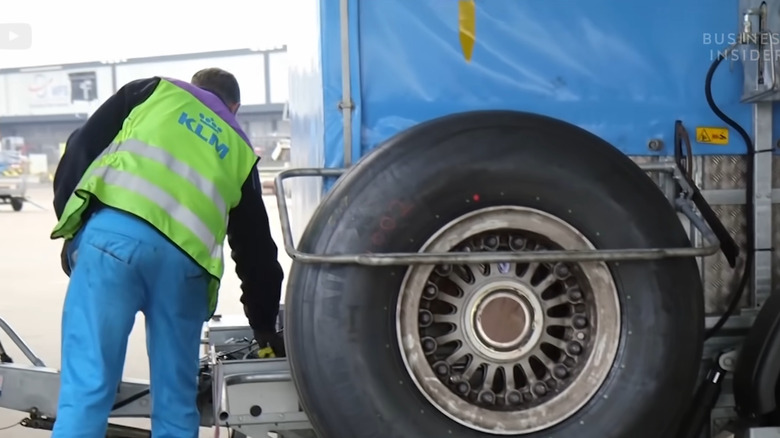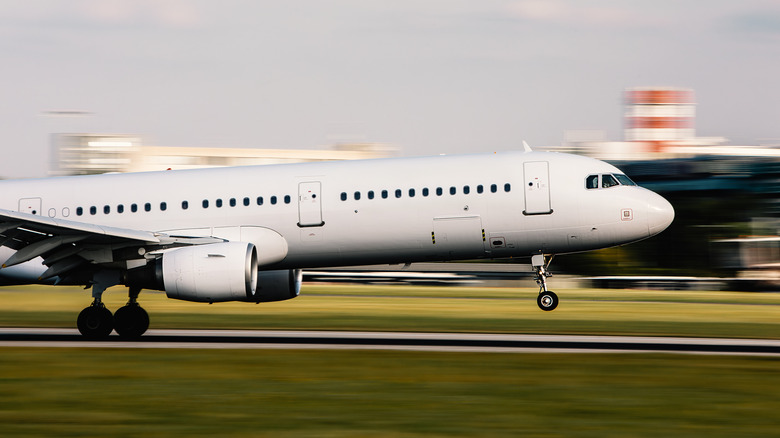What Do The Red And Green Dots On Aircraft Tires Mean?
Similar to car tires, aircraft tires also have a lot of marks and shorthand that seem confusing at a glance. You may have noticed the red and green dots all over the aircraft tire sidewalls — those actually have a very important purpose. First, there's the single red dot, which is used to check if the tire is balanced. This dot should be aligned with the tire's inflation valve. Proper balancing reduces vibration, wobble, and extra wear.
Then, there are the green dots around the rim of the tire, which are called "awl vents." The green markings confirm that the venting process was completed using an awl to make small holes. Awl vents may seem insignificant at first, but airplane tires are inflated to high pressures using nitrogen, and these vents allow trapped gas and air to escape from the tire during operation. This prevents pressure from building, which can make the tire layers – including its inner liner and treads – separate from each other.
Aircraft tires go through daily checks
It's often recommended to check your car's tire pressure once a month — but aviation tires have to be checked daily. That's because aircraft tires can lose up to 5% of their inflation pressure within 24 hours. Pressure checks are performed once the tire has cooled down a bit to avoid elevated readings. Getting the exact pressure is important — if the tires are underinflated by 10% or more, they have to be removed to prevent damage, while overinflation can reduce traction and lead to uneven wear.
After the tires are inflated to the right pressure, there's a 12-hour delay before they're ready to be mounted to the aircraft. This is because tires stretch after the initial inflation, leading to a drop in pressure. While tires are balanced at the factory, it's still important to check that red dot to make sure it's aligned. As such, that seemingly insignificant red dot actually plays an important part in the daily maintenance of various aircraft.
How do tires not get damaged when planes land?
It seems a bit wild that aviation tires don't burst from the hundreds of thousands of pounds of pressure they endure during a landing, but their tires very rarely explode. Here's why.
First, aircraft tires are reinforced with aluminum and steel. Then, they are inflated with nitrogen to a very high pressure — a whopping 200 pounds per square inch – to make the tire firmer. This is six times as much as a car tire. Why nitrogen? It can handle the more extreme temperatures aircraft experience during a flight.
Similar to a car tire, aircraft tires have grooves. Instead of blocky designs, however, they have straight lines, which helps them deal with water in case the plane has to land on a wet runway. They don't need all of the other patterns meant to help with turns and other maneuvering.
Aviation tires usually land about 300 to 450 times before they need to be retread. Retreading involves removing the tires from the aircraft and sending them for servicing, and this process can be done seven or more times before the tire's life comes to an end. The total average lifespan of an aircraft tire is about 1,200 to 1,500 flight hours. With each tire costing from $2,000 to upward of $3,500, maintaining these tires, including alignment, checking for foreign objects, and daily pressure checks, is critical. This maintenance schedule will hopefully extend their lifespan, save some cash, and keep everybody safe.


